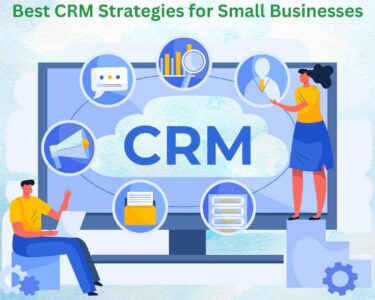Introduction
SAP ERP (Enterprise Resource Planning) is a robust software solution designed to unify and optimize business processes across an organization. By integrating various modules like Financial Accounting, Sales and Distribution, and Production Planning, SAP ERP provides a centralized platform for real-time data management and process automation. This integration enhances efficiency, improves decision-making, and supports strategic planning, making SAP ERP a critical tool for modern enterprises.
What Is SAP ERP?
As mentioned, SAP ERP (Enterprise Resource Planning) is a comprehensive software suite developed by SAP to manage and integrate core business processes across an organization. It consolidates various modules such as Financial Accounting, Sales and Distribution, Human Resources, and Production Planning into a single, unified system. The SAP Course in Pune is a popular training program offering complete guidance on SAP ERP to aspiring professionals.
By centralizing data and automating workflows, SAP ERP facilitates real-time information access, enhances operational efficiency, and supports informed decision-making. It streamlines business operations, improves data accuracy, and enables organizations to respond swiftly to market changes and business needs.
How Does The SAP ERP System Work?
Designers have created SAP ERP to integrate and streamline various business processes within an organization.
Here’s an overview of how it works:
Core Components
- Modules: SAP ERP is composed of several modules, each focusing on specific business functions.
Key modules include:
- Financial Accounting (FI): Manages financial transactions, reporting, and compliance.
- Controlling (CO): Provides insights into cost management and internal reporting.
- Sales and Distribution (SD): Handles sales orders, shipping, and billing.
- Material Management (MM): Manages procurement and inventory.
- Production Planning (PP): Oversees manufacturing processes and planning.
- Human Capital Management (HCM): Manages employee records, payroll, and talent management.
- Integration: The strength of SAP ERP lies in its integration capabilities. Modules interconnect, allowing seamless data flow across different business functions. For example, a sales order in the SD module automatically updates inventory in MM and triggers financial postings in FI.
Data Management
- Centralized Database: All data is stored in a centralized database used by SAP ERP. This ensures consistency and accuracy across the system, as data entered in one module is instantly available to other modules.
- Real-Time Processing: SAP ERP processes transactions in real time, providing up-to-date information and enabling timely decision-making. This is crucial for maintaining efficient operations and responding quickly to market changes.
User Interaction
- SAP GUI: Users interact with SAP ERP through the SAP Graphical User Interface (GUI), which provides a user-friendly way to access different modules and functionalities. The GUI offers various views, reports, and tools tailored to specific roles within the organization.
- Customizability: SAP ERP can be customized to fit the unique needs of a business. This includes configuring workflows, setting up custom reports, and integrating with other systems or applications. Consider referring to the SAP Course in Pune for the best guidance.
Workflow and Automation
- Business Processes: SAP ERP supports end-to-end business processes by automating routine tasks and workflows. For instance, an automated procurement process can generate purchase orders, update inventory levels, and process invoices without manual intervention.
- Reporting and Analytics: The system provides powerful reporting and analytical tools, allowing users to generate detailed reports, analyze performance metrics, and gain insights into various aspects of the business.
Implementation and Support
- Deployment: You can deploy SAP ERP on-premise or in the cloud, depending on your organization’s needs. The implementation process involves configuring the system, migrating data, and training users.
- Ongoing Support: Post-implementation support is crucial for maintaining system performance and addressing any issues. SAP offers a range of support services, including updates, patches, and consulting.
Overall, SAP ERP facilitates integrated and efficient business operations by centralizing data, automating processes, and providing real-time insights, thereby helping organizations achieve better control and strategic advantage.
Key benefits of the SAP ERP system:
Here are the key benefits of the SAP ERP system:
- Integrated Business Processes: SAP ERP unifies various business processes, including finance, human resources, sales, and supply chain management, into a single system.
- Real-time Data Access: Provides real-time access to data, enabling informed decision-making and immediate action across all levels of the organization.
- Enhanced Productivity: Automates routine tasks and standardizes processes, reducing manual efforts and increasing overall productivity.
- Improved Collaboration: It facilitates better communication and collaboration among departments, ensuring everyone aligns with the company’s goals and operations.
- Scalability: Offers a scalable solution that can grow with the company, adapting to new business needs without significant changes to the system.
- Compliance and Risk Management: Ensures compliance with regulatory standards and helps manage risks through transparent and auditable processes.
- Cost Efficiency: Reduces operational costs by streamlining processes, optimizing resource usage, and minimizing errors.
- Customer Satisfaction: Enhances customer service by providing a comprehensive view of customer data, helping to address their needs more effectively.
- Supply Chain Optimization: Improves supply chain visibility and efficiency, leading to better inventory management and timely delivery of products and services.
- Strategic Planning: Supports strategic planning and forecasting with accurate and consistent data, enabling businesses to anticipate and respond to market changes.
Conclusion
In summary, SAP ERP enhances organizational efficiency by integrating diverse business functions into a cohesive system. Aspiring professionals are suggested to join the SAP Course in Mumbai for the best skill development. Its centralized database, real-time processing, and customizable features streamline operations and improve decision-making, ultimately enabling businesses to respond swiftly to changes and maintain a competitive edge.







